Domed Cities at the South Pole, and Floating Sky Habitats: Buckminster Fuller's Wild Ideas!

You best believe it's another article about my man Bucky. The first one covered his best known contribution, geodesic dome architecture for homes. This one will explore some of the really crazy, radical concepts he devised which exemplify how ahead of his time he was.
You already saw in the last article that geodesic domes make for beautiful, efficient homes:
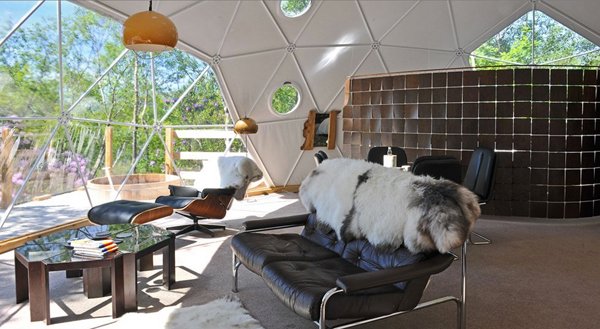
But they also make for an excellent protective shell for an Antarctic research base, established in 1975 and torn down in 2009. For decades it was one of the most iconic research stations in the public consciousness, and the unique properties of the dome allowed it to withstand some truly violent winds.
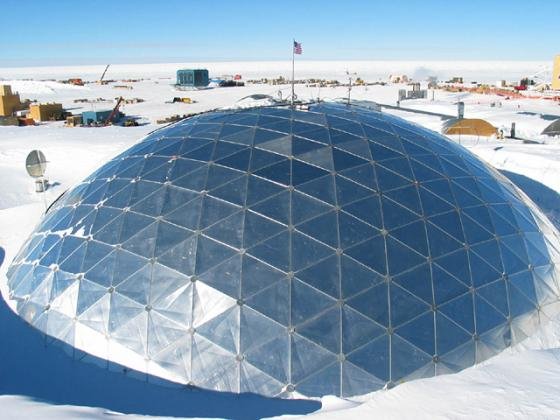
The dome was not the research station itself, merely a shell to deflect wind and to retain some modest measure of heat. The actual living structures were inside, most of them insulated trailers. It's difficult to get a sense of scale from the outside, in particular from the air. Inside, you can see how much the dome superstructure dwarfs an individual polar scientist:
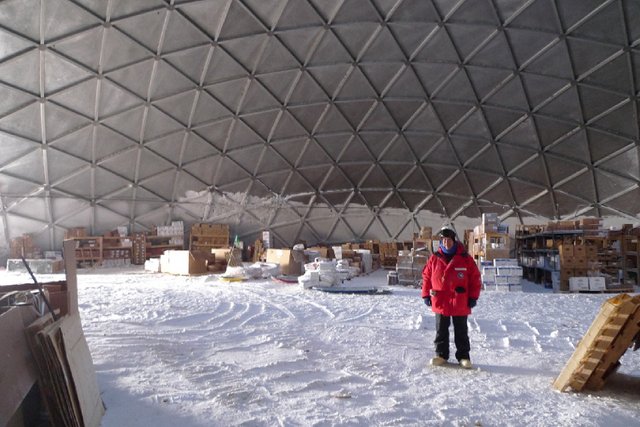
Yet Bucky had far more ambitious plans. Whole domed cities at the South Pole, heated by nuclear energy. The interior of the dome could be kept at tropical temperatures if the residents so desired, lounging on manmade beachfront, palm trees swaying gently while penguins waddle past through deep snow just outside the dome's outer wall.
Bucky once entered serious discussions with city planners and various other officials about the possibility of doming over existing cities in hurricane prone regions. The cost of the dome would be a pittance compared to the cost of repairs each time a hurricane swept through, and that's to say nothing of the added benefits of being able to control weather within the dome and exclude pollution.
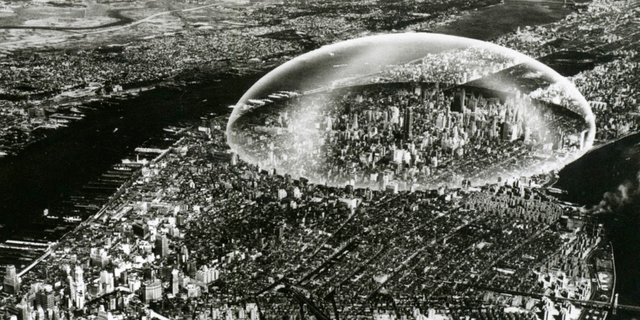
Bucky's ideas ignited the imaginations of science fiction authors, and for a time, the everyman. It was taken for granted that in the future we would all live within massive dome cities in which the air would be perfectly clean, the temperature would be ideal year-round and it would only rain when a majority desired it.
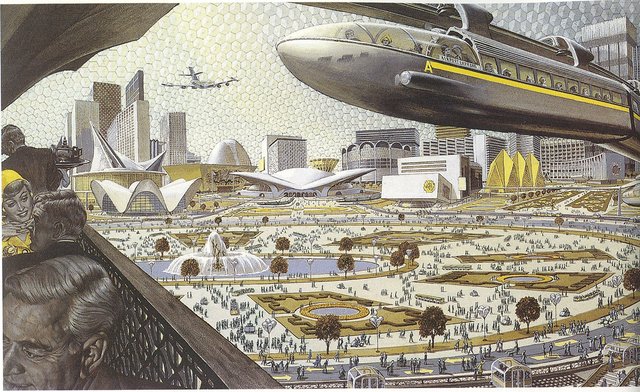
It is still a source of disappointment to me that this future did not materialize, though the Chinese government is looking at domed parks to exclude the ever worsening air pollution. Those wishing to enjoy nature without shredding their lungs would pay an entrance fee, then frolic for some number of hours in a lush natural paradise beneath an immense, airtight transparent canopy.
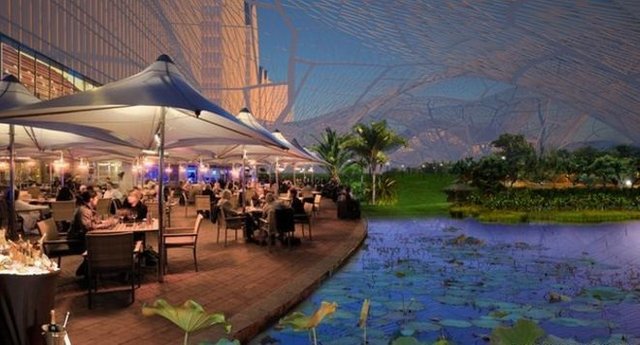
Google's new campus will also be domed, offering apartments within for employees, such that they can enjoy a leisurely, short walk to work each day regardless of outside weather. There will also be restaurants, exercise facilities and everything else necessary for a comfortable, convenient life even should you never wish to step outside.
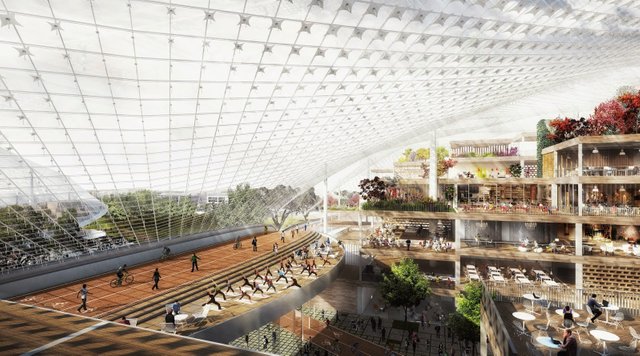
If that sounds like a dystopia more than a utopia, I don't blame you. But it just goes to show that often genius is not fully appreciated in its time, and must wait for global circumstances and human attitudes to come into alignment before finding widespread acceptance.
Even the concept of a nuclear heated Antarctic domed city is being revisited by the Russian government, perhaps to stake a more legitimate claim to the undeveloped resources of the South Pole. The wording of the Antarctic treaty requires a continuous human presence there by all countries which hope to one day claim part of Antarctica, hence the preponderence of large, well staffed research stations (besides the obvious purpose of environmental science)
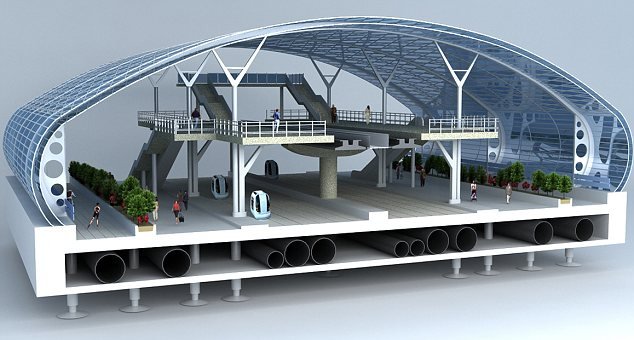
But in truth, Bucky had ideas which have still not been implemented by anybody, in any form. Ideas we may have to wait decades to see attempted, though the engineering side was just as feasible in the fifties as it is today. The most ambitious of them was the Cloud 9 tensegrity sphere, an airborn habitat which could support hundreds, or even thousands depending on size.

The nature of geodesic spheres is that internal volume increases much faster than surface area as you scale the sphere up. There's an inflection point where the amount of warm air you can contain becomes buoyant enough to lift the weight of the enclosing spherical structure. Any increase in size beyond that just increases its capacity to lift additional weight. Like a small town, or resort, for example.

Bucky calculated that a mile wide tensegrity sphere would only need to be one degree warmer inside than the outside air in order to levitate. Increase it an additional half mile beyond that and you're talking massive lifting capacity. All of it solar powered, as the transparent dome membrane would work like a greenhouse, trapping heat which would then keep the sphere aloft. At night fuel could be burned to maintain temperature.
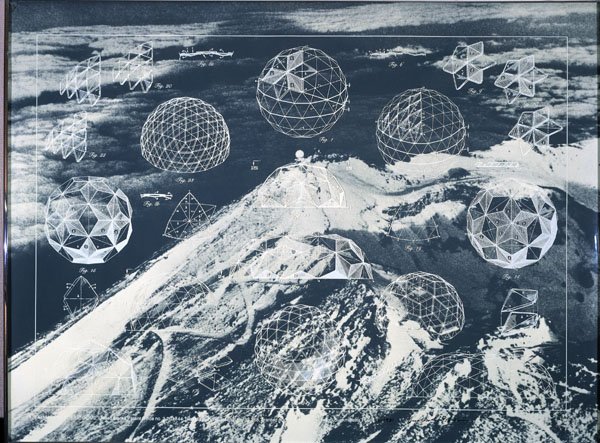
Bucky saw these structures as potential flying hospitals which could be delivered to areas in need of aid which do not have runways. They could be circulated continuously in the jet stream, thousands or millions of them forming a sort of airborn "cargo conveyor belt" which would make possible unprecedented throughput for companies which today rely on bunker oil burning cargo container vessels to transport their goods overseas.

Just imagine a world in which his ideas were fully embraced. A future in which the sky is a destination unto itself, not just a medium for air travel. Someplace you can go and stay, either on vacation or as a permanent resident. In which the South Pole is dotted with dome cities, as warm and cozy inside as any equatorial population center!
We may be waiting some time for such things to come to pass. But when they do, I want people to know whose fertile mind these ideas sprang from, that we might be thankful for the bright lights of humanity.
Hmm... Isn't this essentially what Dubai Airport is? A giant Bio-dome?!
Cloud 9 tensegrity spheres... I must look into these.
You would think at least one company would have put up the funds to create a floating resort by now. They could assemble the sphere in the ocean with floats attached to the segments so buoyancy would support it during construction. Then seal it, pump out the water, and let the sun heat the air inside until it begins to levitate.
Before passenger airliners, mass air travel was done via huge dirigibles. So it is established that the cost of enormous lighter than air craft is not uneconomical provided you have a steady supply of high paying customers. There's no way the world's only floating resort wouldn't do non-stop, highly lucrative business.
I was just reading about zeppelins last night :)
You'll like an article I have planned for tomorrow, then.
Nice @alexbeyman
Shot you an Upvote :)
Nice @alexbeyman
Shot you an Upvote :)
Upvoted